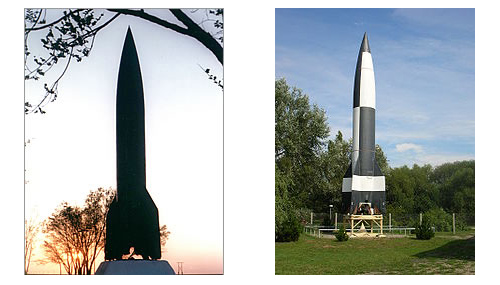by RealUSSR
According to Soviet propaganda, everything which wasn't invented by the ancient Chinese, was invented by the Soviet engineers in the USSR. They were said to have invented the best weaponry, the best tanks, and the best cars.
In reality, of course, Soviet invention had a very small footprint, but, in order to keep up morale, the Soviet government had their engineers copy things from their American, Canadian, or Japanese counterparts. Certainly, nothing is wrong with that per se—such strategies usually save time and money by buying and recreating a licensed version. However, the bad point here was the Soviet brainwashing on the topic of Soviet, claiming superiority in engineering, research, and development that simply didn't exist.
Let's have a closer look at who really invented what.
One of the most controversial inventions was the AK-47 automatic rifle "invented" by a Soviet engineer Mikhail Kalashnikov in 1947. The holy war over this rifle and its true origins has been going on for more than half a century.
The story goes that after the second World War, Germany was not allowed to produce weapons, which the USSR authorities used to their advantage: the prominent German weapons maker Hugo Schmeisser was invited to visit the arms plants in the Ural mountains, where, later on, the Soviets allegedly stole some of his ideas. As per usual, the truth is hard to find, however, we wouldn't be surprised if his family filed a lawsuit over the intellectual property of this particular invention.
The story goes that after the second World War, Germany was not allowed to produce weapons, which the USSR authorities used to their advantage: the prominent German weapons maker Hugo Schmeisser was invited to visit the arms plants in the Ural mountains, where, later on, the Soviets allegedly stole some of his ideas. As per usual, the truth is hard to find, however, we wouldn't be surprised if his family filed a lawsuit over the intellectual property of this particular invention.
AK 47 vs Stturmgewehr 44 by Hugo Schmeisser
The Shpagin rifle is another weaponry story where it is hard to tell whether it was copied off the Finnish or if the Soviets just happened to invent an exactly similar-looking rifle just a year later. The resemblance is striking, and yet again, no mention of the rights reserved.
Shpagin Rifle, 1941 vs Suomi Rifle (Finland), 1931
Next, the popular Makarov pistol of 1951. This is another acclaimed example of Soviet weaponry, this pistol has been copied by many as a popular military side arm. The question is still raised whether it is a scaled up version of a German pistol (minus decorative elements) or not. However, the resemblance is quite uncanny.
Makarov 9mm Pistol, 1951 vs German Walther 9 mm Ultra, 1935
Next, heavy military machinery. Every kid knows that tanks were the USSR's first and foremost objects of pride, yet there is an opinion that the famous T-34 and its later versions were just copycats of the American Christie line.
T-34, 1940 vs Tank Christie, USA, circa 1930
The next one is probably one of the few honest examples of Soviet cooperation. During the WWII, seventy American electric locomotives were shipped to the USSR as part of the Allied Forces war effort. The USSR authorities kept them after the war, adopting the design to form the basis of their own line of diesel locomotives.
Diesel-Electric Loco (DA), of 1946 vs American ALCO RSD-1, of 1941
As for planes, here even Wikipedia supports the story of the Tupolev plane Tu-4 being shamelessly copied off the American Boeing B-29 Superfortress. In 1945 the Tupolev company had meticulously reverse engineered the American plane to the point of ashtray locations! Certainly the whole concept of reverse engineering (i.e. discovering the technological principles of something through analysing its workings in detail) is praiseworthy.
The Tupolev TU-4 (1947) vs Boeing B-29 of 1942
Even the rockets—an endless well of Soviet pride—are rumoured to be mere copies of German developments. Needless to say, it is still a remarkable act of engineering. Academic Sergey Korolev—the same scientist who sent the first human Gagarin into outer space—was in charge of this project, so it just as successful.
The rocket R1, 1948 vs the German V-2, 1942
The following projects do not look identical. However, both the hydro electrical power station on the river Dnipro and the American Hoover Dam, Nevada, have something in common: their chief engineer, C J Thompson, oversaw the development of both projects.
DneproGes (1927-1939) vs Hoover Dam (1922-1933)
Another fine example of dubious engineering success—when Khrushchev started his building binge, his architect team did not invent the hideous looking apartment blocks—they just borrowed the idea from German civil engineers. Pity both parties, in this case.
Soviet vs German Plattenbau Apartment Blocks
The automobile industry was the one with the most copied items. In some cases, even parts are said to be compatible!
Gaz Mini-Truck, 1932 VS Ford AA, 1929
Volga of 1970 vs Ford Falcon, 1966
Also, remember our post about Vyatka mopeds, the exact and true copies of Vespa? That one is just classic.
The bottom line here is about honesty, really. Nobody is expected to invent things from scratch — you can borrow other people’s ideas as long as they are properly copyrighted. It is also more efficient to modify the original version to suit the domestic realities better. However, it is good manners to acknowledge the work of others. And it is certainly shameful to claim the intellectual rights to things which never belonged to you. And this is where the USSR had failed dramatically.
The RealUSSR site shut down some years ago. This article has been improved by editing
The RealUSSR site shut down some years ago. This article has been improved by editing















































There is so much to dunk on when it comes to the USSR but this is cheap and half of it is wrong. The christie suspension for example was not used in the T-34, but in the BR-2. The T-34 used a torsion bar system. Just one thing to point how this is stupid. A ton of copycatted consumer products from the 60s still used in the 80s and yet this guy picks the wrong ones.
ReplyDelete